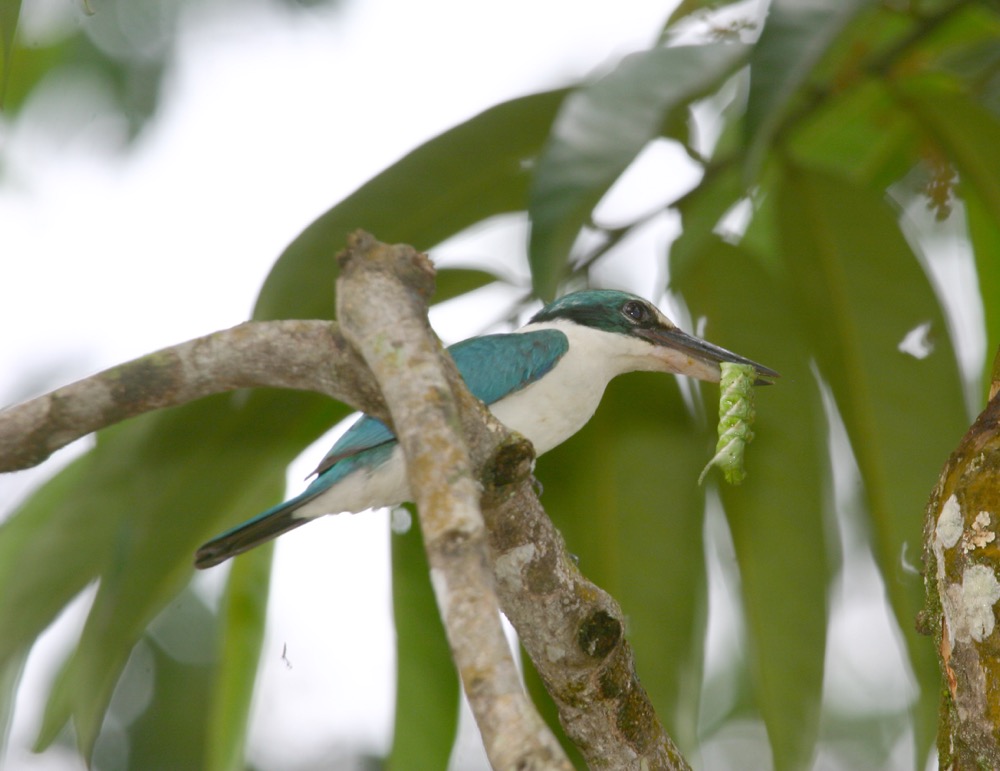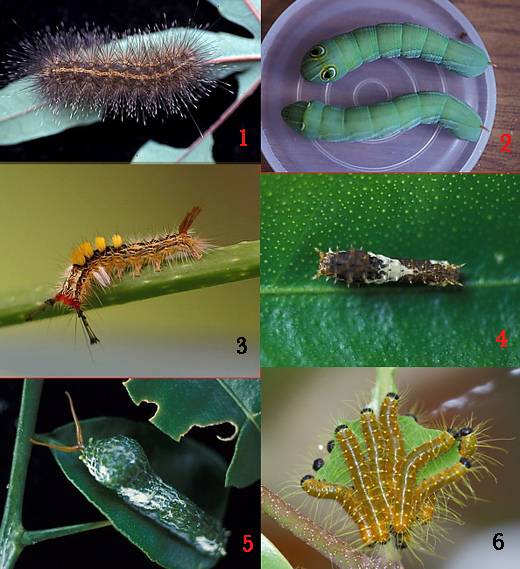Birds love caterpillars. They are full of goodies and excellent growth food for their chicks. A recent documentation showed the food brought to chicks of the Oriental White-eye (Zosterops palpebrosus) to be mostly caterpillars.
Large, juicy caterpillars are eaten after their gut contents are removed, as seen in the Collared Kingfisher (Todiramphus chloris) taking the caterpillar of the Privet Hawk Moth (Psilogramma menephron) (above).
The Chestnut-bellied Malkoha (Phaenicophaeus sumatranus) was seen taking a large hairy caterpillar between its beak, swinging it vigorously to stun it. The entire length of the caterpillar was then passed back and forth between the bill of the bird to remove the stomach contents.
Even caterpillars safely enclosed within a silky cocoon are sometimes not safe from hungry birds, see the post on the Black-naped Oriole (Oriolus chinensis) and the moth’s cocoon.
We even have a post of the Oriental Pied Hornbill (Anthracoceros albirostris) catching the caterpillar of the Atlas Moth (Attacus atlas).
Obviously many caterpillars end up as food for birds. Yet many others escape detection, for how else do we explain the presence of so many butterflies and moths around, in terms of species number and number of individuals of each species.
The survival strategies of caterpillars include cryptic colouration, developing hairs (above 1, 3), camouflage, being distasteful through bright colouration (above 3, 6), appearing larger and fiercer than what they really are (above 2), retractable feelers (above 5), looking like a bird’s dropping (above 4), etc.
Input and images by YC.











7 Responses
WOW! That’s a nice collection of colourful caterpillars.
Did not know that caterpillars camouflage themselves to look like birds’ poo. 🙂
beautiful caterpillars, yummy for birds..
Amazing unusual caterpillar pictures. What is number three in the montage of six please. I have seen some on my wysteria but cant identify them.
Sorry Elaine, no idea. Probably a moth caterpillar.